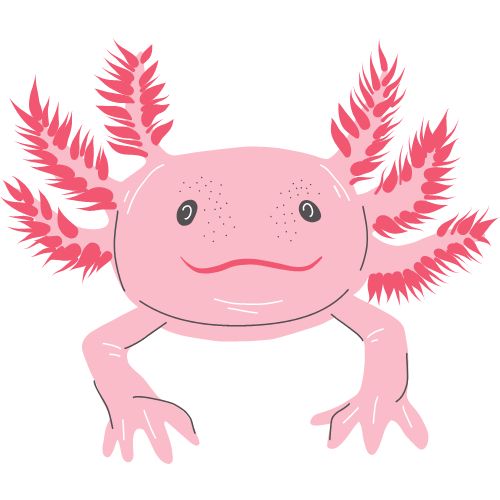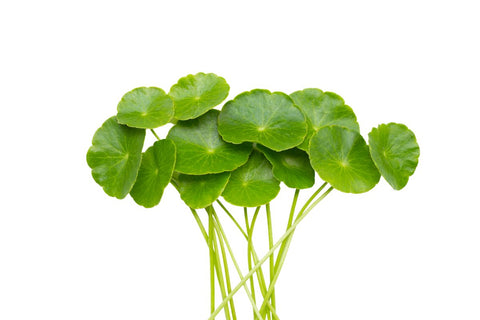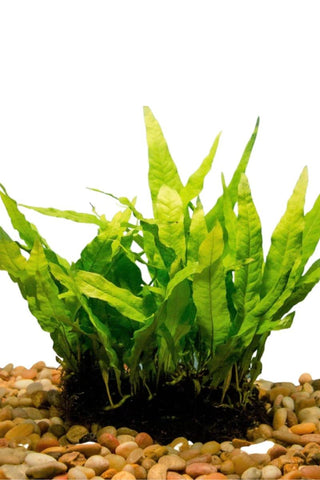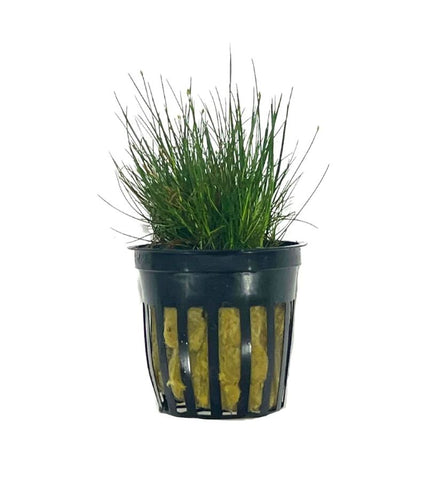Have you been wondering what the best live plants to put in your axolotl tank are? We’ve got you covered!
Just like any aquarium creature, axolotls can benefit greatly from having live plants in their tank (for more information about the general benefits of adding live plants to your aquarium, check out this post).
That said, there are still some factors to keep in mind when choosing plants specifically for axolotls.
As you may be aware, axolotls prefer cooler water temperatures (generally 60-65 degrees F is the sweet spot) - so this narrows the spread down to cool water plants. Also axolotls absorb water and oxygen through their skin, so it's important the water column remain clean and chemical-free. So that removes any plant that will need liquid fertilizer from the equation.
Please also note that anytime you purchase plants for your axolotl, we highly recommend rinsing your plants and/or doing a bleach dip first. Keep in mind these are live plants grown in different environments. Therefore hitchhikers like snails and other pests are not only likely, but expected to tag along with your aquarium plants.
Continue reading below for a list of live aquarium plants that are good choices for axolotl tanks and why!
Let's take it from the top - literally!
Brazilian Pennywort is a beautiful, vine-like stem plant. It's fast-growing and highly versatile. While it can be planted in a substrate, we find it's better utilized floating at the surface for your axolotl tank. Axolotls like themselves some shade as the bright lights irritate their eyes.
I like to take a bunch of Brazilian Pennywort and spread it around the surface. It's fast-growing nature will take over the surface, providing that needed shade at the bottom of your aquarium.
Optional alternative: Some axolotl caretakers like to use duckweed as their surface-covering plant. That is also a totally cool option. However, I like to warn newbies in the hobby that duckweed is extremely invasive. If you want to put duckweed in your aquarium, be sure you are fully prepared to live with it in perpetuity - because once it's in there, it is very hard to fully get rid of.
Watersprite is another versatile plant that can be planted in the substrate or left to float at the surface. It's a fast-growing plant and will eat all of the nitrates your water column can provide. The leaves will branch out quickly. If left to float, the pieces will consume the surface area and roots will drape down for a really effect. If planted in the substrate, the leaves will provide shade or a place for your axolotl to hide.
Java Ferns make an excellent mid- or background plant for axolotl tanks. Their tall, green leaves provide a great shaded hiding place for axolotls who tend to enjoy their privacy. These plants also thrive in cooler waters with dim lighting, making them a perfect match for axolotl tanks.
This plant has leaves that grow from a rhizome. So make sure you are not burying your java fern into the substrate. Burying the rhizome will cause the plant to rot and die, which will have a negative impact on your water quality. Instead, it's best to tie down the java fern to a hardscape with twine or glue it to a hardscape with an aquarium-safe glue.
Java Moss can survive in a wide variety of aquarium conditions, including those required for your axolotl tank. This plant will provide a nice, soft carpeting for your aquarium with little maintenance required, and your axolotl will definitely appreciate the texture for their sensitive feet!
Java moss can be tied down or glued to a hardscape. It's a slow-grower, but eventually it will provide a soft carpeting effect to whatever it is tied down to.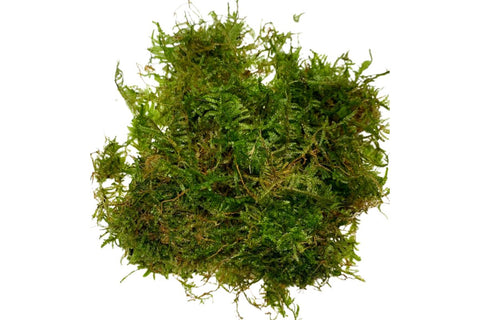
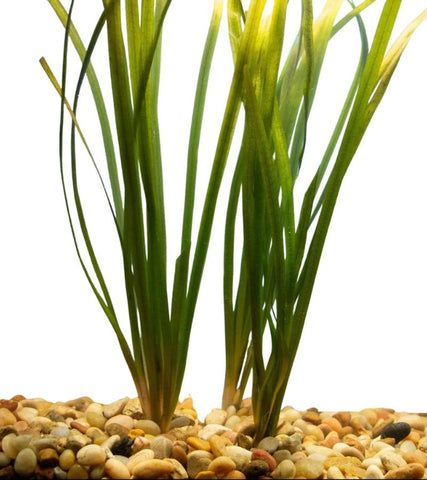 tank. The tall grass-like blades that grow from this plant will be great for your axolotl to run through and hide in. Keep in mind that Vallisneria grows fast and tall, so it will need to be trimmed somewhat frequently. Vallisneria also spreads outward, so it grows undisturbed don't be surprised to see a curtain of jungle val eventually!
tank. The tall grass-like blades that grow from this plant will be great for your axolotl to run through and hide in. Keep in mind that Vallisneria grows fast and tall, so it will need to be trimmed somewhat frequently. Vallisneria also spreads outward, so it grows undisturbed don't be surprised to see a curtain of jungle val eventually!This plant is versatile and resilient, thriving in a variety of conditions and making an excellent choice for your axolotl tank. It stays relatively short, making it a good choice for the foreground of your aquarium and providing a few hiding spots for your axolotl.
Anubias can grow in practically any aquarium condition. So it will do just fine in low-light, cool waters. Their firm, dark green leaves will grow large and broad - providing shade and a hiding spot for your axie.
Much like Java Fern, anubias is a rhizome-grower. So best to tie it down or glue to a hardscape. Or toss it in your aquarium and let the anubias lie where it sinks. Eventually, it will wrap it's roots around whatever is sturdy around it.
Reminder: burying the rhizome will kill the plant.
Hornwort makes an excellent background plant for your axolotl tank. It grows tall and typically fast, although the cooler conditions required for your axolotl are likely to slow down growth. Its soft texture is great for axolotls, and it provides added water filtration!
Hornwort is also very difficult to kill. However, it's important to note that hornwort may shed it's needles in the days after being introduced to your aquarium. The needles will grow back stronger once it is accustomed to it's new water.
This may cause a huge mess of debris that will need to be vacuumed up promptly so it does not dirty your water. As annoying as this might be, the hornwort is unlikely to ever shed again assuming no major changes to water quality. Other than that, the hornwort is one of the best plants for soaking up nitrates like a sponge!
We hope the above list is helpful as you begin to think about adding live plants to your axolotl tank. Though your axolotl is likely to try munching on most of these plants, none of them are poisonous or harmful to it. Follow any of the links to the individual plants!

